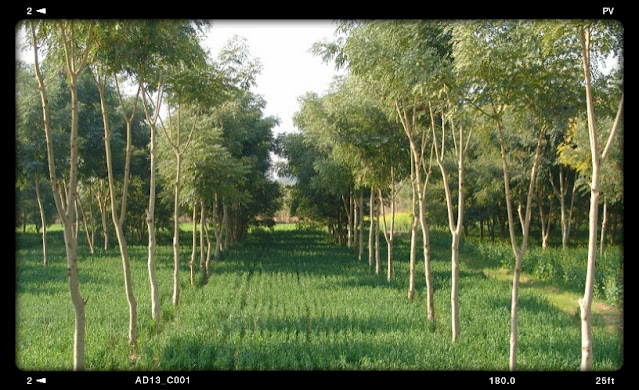In 2022/2023, solar and wind are expected to add more than 60% of the utility-scale generating capacity to the U.S. power grid (46% from solar, 17% from wind). The United States is a resource-rich country with abundant renewable energy resources.
Renewables are on track to generate more power than coal in the United States this year. But the question is whether they can grow fast enough to meet the country’s climate goals.
Supply chain constraints and trade disputes have slowed wind and solar installations, raising questions about the United States' ability to meet the emission reductions sought by the Inflation Reduction Act. The Biden administration is banking on the landmark climate law cutting emissions by 40 percent below 2005 levels by 2030.
Many analysts think the United States will ultimately shake off the slowdown thanks to the Inflation Reduction Act's $369 billion in clean energy investments. But it may take time for the law’s impact to be felt. Tax guidance needs to be finalized before developers begin plunking down money on new facilities, and companies now face headwinds in the form of higher interest rates and the looming threat of a recession.
The Inflation Reduction Act's emission reductions hinge on the country’s ability to at least double the rate of renewable installations over the record levels observed in 2020 and 2021.
Assuming intermediate efficiency, solar photovoltaic (PV) modules covering 0.6% of the U.S. land area could meet national electricity demand. PV module prices have declined to an average of $0.27/watt. The U.S. manufactured 1% of PV cells and 3% of PV modules globally in 2020. In 2021, a new record high of over 23.6 GW of solar photovoltaic capacity was added in the U.S., raising the total installed capacity to over 121 GW. Solar accounted for 46% of the new generating capacity in 2021.
Hydrothermal resources, i.e., steam and hot water, are available primarily in the western U.S., Alaska, and Hawaii, yet geothermal heat pumps can be used almost anywhere to extract heat from the shallow ground, which stays at relatively constant temperatures year-round. Electricity generated from geothermal power plants is projected to increase from 15.9 billion kWh in 2021 to 47.4 billion kWh in 2050. Geothermal electricity generation has the potential to exceed 500 GW, which is half of the current U.S. capacity.
U.S. onshore wind resources have a potential capacity of almost 11,000 GW and a current installed capacity of 132.7 GW. Offshore wind resources are potentially 4,200 GW, the current capacity is 42 MW, and the development pipeline contained over 28 GW of projects in 2019. Over 16 GW of wind capacity was installed in the U.S. in 2020, an 85% increase from 2019. The federal production tax credit (PTC) significantly influences wind development, but cycles of enactment and expiration lead to year-to-year changes in investment. In 2020, the PTC was extended to allow wind projects beginning construction in 2020 or 2021 a PTC at 1.5¢/kWh for 10 years of electricity output. Based on the average U.S. electricity fuel mix, a 1.82 MW wind turbine (U.S. average in 2019) can displace 3,679 metric tons of CO2 emissions per year. By 2050, 404 GW of wind capacity would meet an estimated 35% of U.S. electricity demand and result in 12.3 gigatonnes of avoided CO2 emissions, a 14% reduction when compared to 2013.
In the U.S., net electricity generation from conventional hydropower peaked in 1997 at 356 TWh/yr. Currently, the U.S. gets about 260 TWh/yr of electricity from hydropower. While electricity generated from hydropower is virtually emission-free, significant levels of methane and CO2 may be emitted through the decomposition of vegetation in the reservoir. Other environmental concerns include fish injury and mortality, habitat degradation, and water quality impairment. “Fish-friendly” turbines and smaller dams help mitigate some of these problems.
Wood—mostly as pulp, paper, and paperboard industry waste products—accounts for 43% of total biomass energy consumption. Waste—municipal solid waste, landfill gas, sludge, tires, and agricultural by-products—accounts for an additional 9%. Biomass has low net CO2 emissions compared to fossil fuels. At combustion, it releases CO2 previously removed from the atmosphere. Further emissions are associated with the processing and growth of biomass, which can require large areas of land. Willow biomass requires 121 acres of land to generate one GWh of electricity per year, more land than other renewable sources.
For now, U.S. renewable output is edging higher. Wind and solar output are up 18 percent through Nov. 20 compared to the same time last year and have grown 58 percent compared to 2019, according to the U.S. Energy Information Administration. The government energy tracker predicts that wind, solar and hydro will generate 22 percent of U.S. electricity by the end of this year. That is more than coal at 20 percent and nuclear at 19 percent.
Renewable output also exceeded coal in 2020, though that year saw a decrease in energy generation across the board due to the economic lockdowns associated with the Covid-19 pandemic.
Wind and solar growth have to continue at a blistering pace to meet the United States' climate targets. Researchers at Princeton University estimate the country needs to install about 50 gigawatts of wind and solar annually between 2022 and 2024, or roughly double the 25 GW that the United States installed annually in 2020 and 2021.








